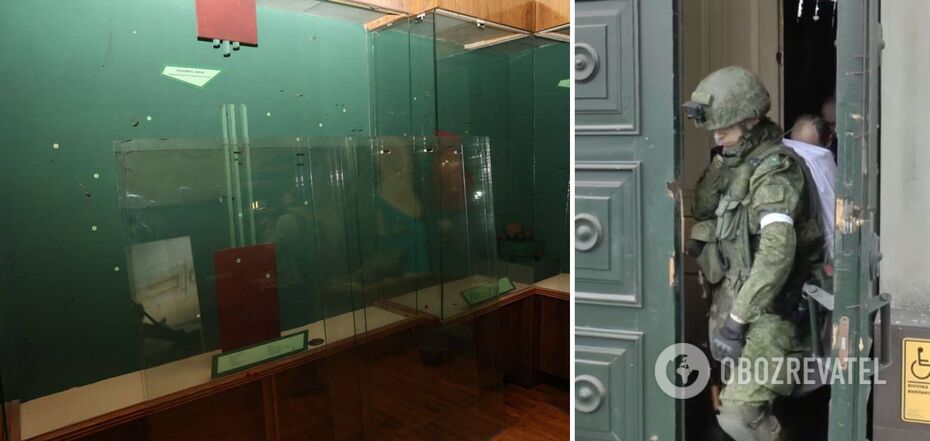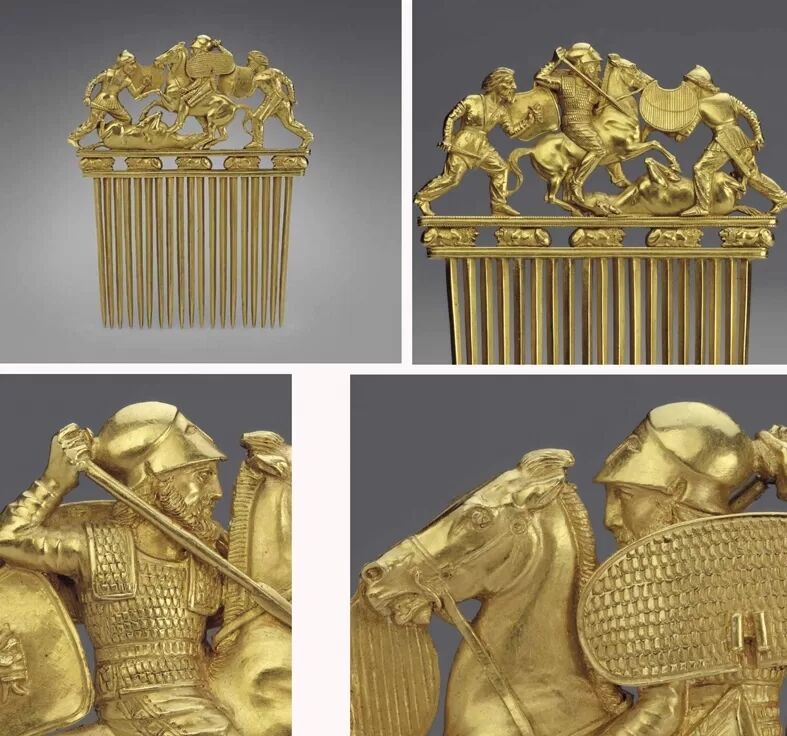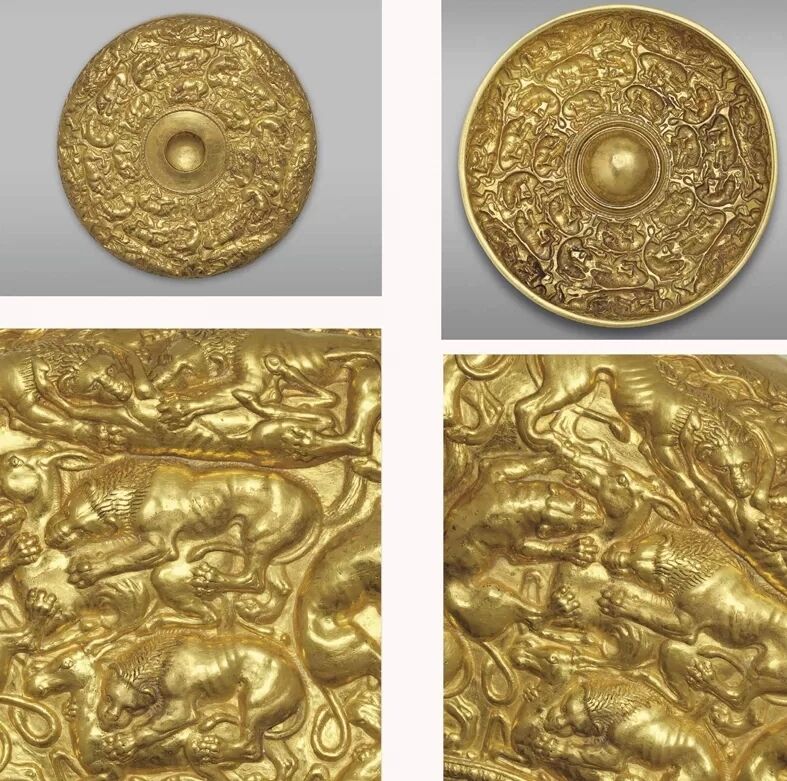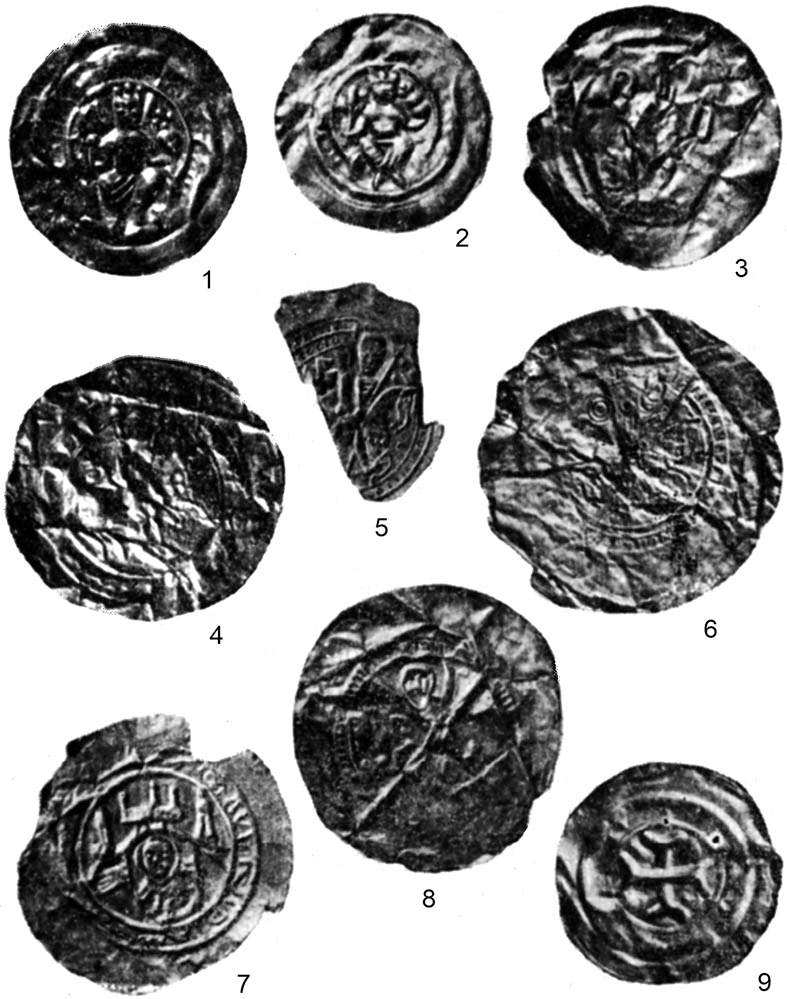News
A golden crest from a mound and earrings from Olbia: five archaeological treasures that Russia stole from Ukraine
During the aggression, Russia has looted all Ukrainian museums located in the temporarily occupied territories. The fact that the invaders almost immediately begin with the "evacuation" of collections and museum exhibits clearly indicates that they realize that they have come for a short time and must have time to steal everything.
The Union of Archaeologists of Ukraine believes that this is not a coincidence and not an ordinary thirst for theft by the occupiers. This is a continuation of Russia's systematic long-term imperial policy aimed at appropriating Ukrainian cultural property.
"These 'robberies' are not isolated unfortunate situations. Russia's policy aimed at appropriating Ukrainian cultural property is aimed at rewriting, and partly "inventing" the history of Ukraine convenient for Russia," the Union says.
It is clear that the Russian president was not telling the real story in his last interview - it was just nonsense. However, Putin's fiction must be countered with the truth. That is why the Union has launched the project "Archaeological Heritage Stolen by Russia" - to prevent the Russian Empire from rewriting the stolen, destroyed, appropriated, and stolen to suit itself.
As part of the project, archaeologists have compiled a list of jewelry that was taken from Ukraine to Russia at different times. We bring to your attention five such archaeological treasures.
Golden comb from the Solokha mound
A golden crest depicting a battle scene from the Solokha mound (late 5th - early 4th century BC). The mound was located near the village of Velyka Znamianka, now in Zaporizhzhia region, on the left side of the Dnipro River, 10 km from Enerhodar. The territory is under occupation.
Solokha had a grand mound 18 meters high and 110 meters in diameter. It was here that unique examples of Greco-Scythian metal art were found. This work of goldsmithing is a high level of Greek craftsmanship commissioned by the Scythian aristocracy.
Today you will no longer see these items in Ukrainian museums because they were stolen and moved to the Russian Hermitage. And there, the place of origin is either "Northern Black Sea region" or "Prydniprovia", without any mention of Ukraine.
The crest is not the only impressive find from the Solokha mound. There is also a unique sword in a sheath covered with gold. As well as a golden vial and many other unique items.
A phial is an ancient Greek flat sacrificial bowl without handles. This one has a relief image of predators attacking ungulates.
A treasure trove of coins from Khotyn
In 1889, in the town of Khotyn (Chernivtsi region), while cultivating his leased land, a townsman, Arkhip Ozarchuk, found a large treasure of silver coins. In total, the collection consisted of between 1000 and 1600 coins.
Now, for some reason, 900 whole and fragmented specimens are in the Hermitage collection. But despite official appeals to the Hermitage's management, the Russians systematically refused to allow Ukrainian scholars to even get acquainted with the collection of medieval coins from Khotyn.
Among the coins, 888 brakteats were identified. Brakteates are silver coins minted on a thin circle of metal with an upper stamp on a soft surface on one side only. Because of this, the image on the obverse is convex and the image on the reverse is concave. They are up to 40-45 mm in diameter and weigh about 1 g.
These coins once came from German lands via Hungary, in particular Transylvania, to the lands of the Principality of Galicia-Volhynia. That is, they reflect the path from Hungary to Kyiv and further to the Volga Bulgars. The Khotyn treasure is associated with the vicissitudes of King Danylo's struggle against the Hungarians and boyar opposition in 1230.
The Lion. Hetman Mazepa's cannon
According to historians, the Russians began systematically plundering Ukraine's history in the early 18th century, after the defeat of Hetman Ivan Mazepa's uprising. Among the items stolen by Russian nobles, a special place is occupied by Cossack cannons.
These are outstanding examples of Ukrainian baroque copper alloy products that were commissioned by Hetman Mazepa and Colonel Mykhailo Borokhovych of Hadiach. The lion's share of these monuments is kept in museums in Moscow and St. Petersburg.
Among other things, the Russian Empire appropriated the bronze long-barreled 16-pounder cannon "Lion," which belonged to the Hetmanate's General Military Artillery. Karp Balashevych cast it in 1705 in Hlukhiv (today's Sumy region) at the request of Ivan Mazepa and richly decorated it with baroque ornaments and heraldic insignia of the hetman.
Like other Ukrainian cannons and kleynodes of the Mazepa era, these items were captured by the Russians when they sacked Ukrainian cities in 1708-1709. After these events, artillery was taken out of Ukraine. Some large-caliber cannons were destroyed in Baturyn. All Zaporizhzhia artillery was confiscated after the storming of the Sich on May 14, 1709.
It is known that Mazepa's library and a huge collection of works of art and weapons were stolen by the Moscow general Menshikov. They are now in the Hermitage and other museums, and have become the "foundation" on which the Russian museum business developed.
Gold earrings from Olbia
Olbia is one of the most important polises of the ancient Greeks in the Northern Black Sea region. Today, the territory with the excavations of Olbia is a historical and archaeological reserve located in Mykolaiv region, on the right bank of the Bug estuary.
Systematic excavations on the territory of Olbia have been carried out since 1901. Since then, the most valuable Olbian finds have usually been taken to museums in Moscow and St. Petersburg (Leningrad). Less valuable finds still ended up in museums in Odesa and Mykolaiv.
Among the many antique objects from the excavations of ancient polises in the Northern Black Sea region, the imperial center also took gold earrings from the 6th century BC from the Olbian necropolis, an ancient cemetery.
The jewelry was discovered in one of the graves in 1913. It is likely that the burial belonged to a wealthy resident of the polis. Ear jewelry was found on both sides of her head. These pairs of jewelry were worn over the ear so that most of it was underneath.
It is known that at least five similar pairs of jewelry of the same type found at the Olbian necropolis were taken to the Hermitage. The Russian museum does not currently exhibit these finds. Most likely, they are in the museum's collections.
Helmet and iron mask from the Kyiv region
These artifacts are from the history of the "black klobuchs" who lived in Porosha, a forest-steppe part of the Kyiv region. In princely times, various tribes of nomads came here from the Great Steppe. Kyivan chroniclers called them "black klobuks".
Numerous mounds of "black klobuchs" are scattered in the southern Kyiv region between the rivers Ros and Stuhna.
Starting in 1888, military historian Mykola Brandenburg emptied about 300 mounds for the needs of a museum in St. Petersburg. The helmet and mask were found in 1892 near the village of Lypovets, Kyiv region.
Since 2017, Russians have been showing off an iron mask from the village of Lipovets, Kyiv region, in the Hermitage's permanent exhibition. The place of discovery is labeled "Little Russia".
As reported by OBOZ.UA, entrepreneur Elon Musk ridiculed Putin's interview with former Fox News journalist Tucker Carlson. Even the scandalous billionaire, who believes in a number of Russian propaganda narratives, was not impressed by the Russian president's "historical excursions."
Only verifiedinformation is available on our Telegram channel OBOZ.UA and Viber. Do not fall for fakes!

































